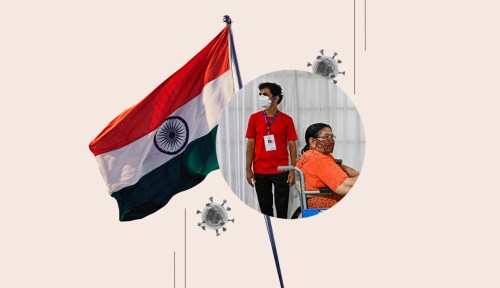No good news can come from receiving a WhatsApp call in the middle of the night from family that live on the other side of the world. So when my cousin called me last week from India, my heart immediately sank; I knew something was wrong.
Experts in This Article
Shailey Prasad, MBBS, MPH, is executive director of the University of Minnesota Center for Global Health and Social Responsibility and Vice-Chair for Education at the Department of Family Medicine and Community Health.
He is actively involved with undergraduate, medical student, and residency education. He has extensive experience working in underserved areas around the world, from forest tribes in southern India to rural Mississippi, advocating that health is critical to the overall development of an area. He has also been part of research teams in health services research and rural health and is actively involved in developing primary care in various parts of the world.
“Your Masi is no more,” he told me, crying on the phone.
My Masi, maternal aunt, was a kind and compassionate person who lived a life surrounded by a loving family and was a fixture in her community, always helping others in need. A beloved teacher turned principal, I’d long admired her for her ability to stay cool under pressure. She had only recently retired and taken on a new role of being a grandmother. Telling my Mom, her younger sister, the heartbreaking news of her passing was one of the hardest things I’ve ever had to do.
My Masi had recently been diagnosed with a blood cancer and had regularly been receiving treatment for her illness. Her treatments were going well, but when her health started deteriorating suddenly one day, my cousins were left scrambling, trying to figure out what to do. Finding a hospital with an empty bed was impossible; and even if one were to be found, my cousins didn’t know how they’d be able to get her there without risking exposure to COVID-19, I was told. By the time they found a doctor to come to their home, it was too late; all he could do was declare that my Masi was dead.
Although she didn’t have COVID, the disease doubtlessly contributed to her death. In India, a country with a population of nearly 1.4 billion people, an estimated 400,000 new cases of COVID-19 each day is having a devastating ripple effect on the country’s already stressed health-care infrastructure. India’s health-care system has been largely privatized, making it very expensive for citizens. As Sumit Mazumdar, research fellow at the Centre for Health Economics at the University of York, wrote for The Conversation, “Most of the money spent on health in India comes directly out of people’s own pockets, with government spending on health being one of the lowest in the world, averaging about $38 per person per year over the past two decades.” With over 80 percent of Indians without health insurance (either private or government-funded), that means health care was prohibitively costly for many even before the pandemic.
The second wave of the coronavirus pandemic in India began in mid-March and it’s estimated that, on average, 153 people are dying every minute.
The second wave of the coronavirus pandemic in India began in mid-March and it’s estimated that, on average, 153 people are dying every minute. The news and social media feeds are dominated by images of people lying outside hospitals with oxygen tanks and mass cremations. Despite being a major vaccine producer, supply and delivery problems have caused a drop in vaccinations and the Indian government has been criticized for its lack of response and urgency to the crisis. Arundhati Roy, prize-winning author of The God of Small Things, put it bluntly for The Guardian: “The system hasn’t collapsed. The government has failed. Perhaps ‘failed’ is an inaccurate word, because what we are witnessing is not criminal negligence, but an outright crime against humanity.”
“We’re getting a lot of SOS calls from patients and trying to support families with requests for finding a bed, oxygen supplies, or any other sort of issues,” says Malini Aisola, a public health expert in New Delhi who, alongside other volunteers, has been responding via word of mouth and social media to distress calls from people looking for help. She tells me that the current crisis is not only in finding available hospital beds and oxygen, but is reverberating into access for health-care services as a whole.
“The whole health infrastructure is stretched as much as possible in trying to respond to the pandemic and COVID patients,” Aisola says. “I’m aware of at least one hospital that had to stop doing all of its routine surgeries because oxygen was in short supply. They couldn’t really take a chance to do surgeries because all hospitals in Delhi were on the brink, surviving from hour to hour, and all available oxygen needed to be kept for the COVID patients.”
“[The pandemic] is almost a stress test on the system and the most vulnerable ones tend to be affected more. It’s not unique to India but we are seeing it play out in India in much more significant ways.” —Shailey Prasad, MPH
With the impact of the pandemic and the overall inequity in accessing care, it’s inevitable the country’s most vulnerable populations will be the most impacted.
“Every other place where we’ve seen COVID spikes—when it happened in Italy or the UK, or New York City—you heard about how it’s affected people of color more or the poor more,” says Shailey Prasad, MPH, executive director of the University of Minnesota Center for Global Health and Social Responsibility. “It’s almost a stress test on the system and the most vulnerable ones tend to be affected more. It’s not unique to India but we are seeing it play out in India in much more significant ways.”
He adds the pandemic has just worsened existing problems faced by a country where infectious diseases like tuberculosis and malaria pose significant threat to public health and only 3.5 percent of the GDP goes to health (in comparison, the U.S. contributes nearly 17 percent).
“What makes [this second wave] catastrophic is the significant loss of lives and the spillover effect in a country of nearly 1.4 billion people with rather poor health infrastructure. It makes it all the more challenging in the best of circumstances to handle any medical issue,” Prasad says. “With other major health considerations in India that need ongoing attention, like tuberculosis, dengue fever, malaria, you put the second surge in a system that is already stretched, it makes the perfect storm.”
While financial aid and planeloads of supplies like ventilators have started to arrive from foreign nations, this support only scratches the surface. “The short-term need is for rapidly deployable hospitals with adequate ‘beds’ and ICU care. The long-term [need] would be for the country to invest more in health. The resources are there in India but need to be mobilized,” Prasad says.
Up until now, I hadn’t faced the breadth of the pandemic and how personal it could become. Now, my family joins the collective trauma of millions of other grieving families in India and abroad and I’m left wondering about my Masi and if her life, like countless others, could have been saved.
How you can help
Want to lend your support? While spreading awareness about the COVID-19 crisis in India on social media brings attention to the tragedy, you can also donate to reputable organizations who are providing relief aid such as:
You can also donate to this publicly sourced list of Mutual Aid fundraisers.
Sign Up for Our Daily Newsletter
Get all the latest in wellness, trends, food, fitness, beauty, and more delivered right to your inbox.
Got it, you've been added to our email list.











